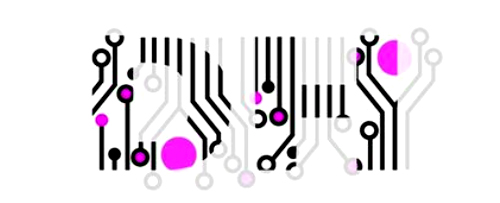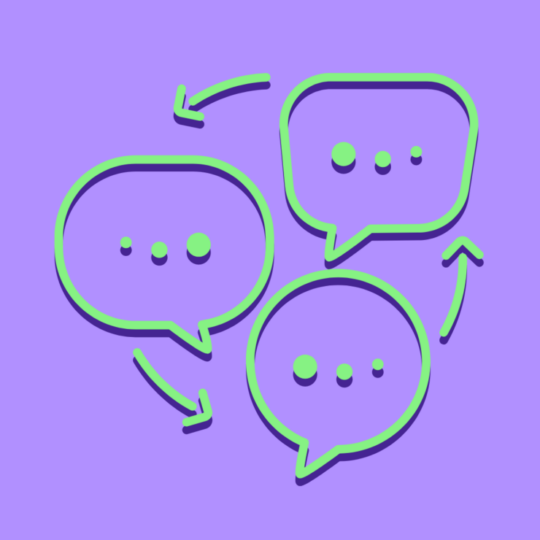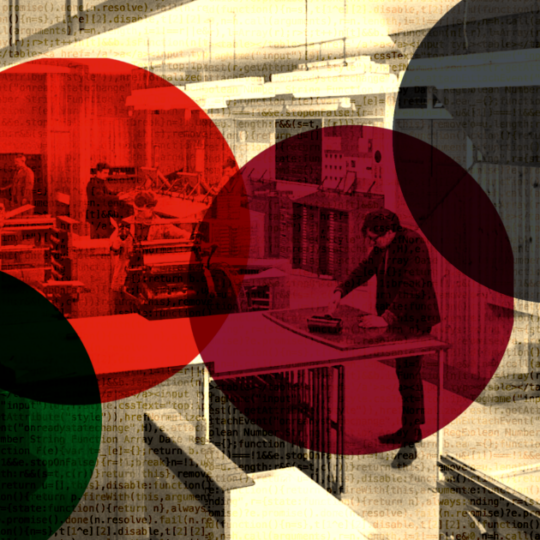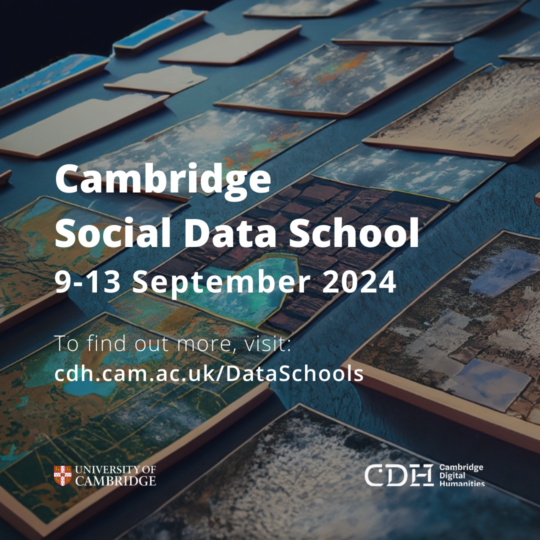| 26 Jun 2017 - 28 Jun 2017 | 1:00pm | Ruskin Gallery, CRASSH, and Computer Laboratory | |
- Description
- Programme
- Abstracts
Description
 Registration for this event has now closed. If you are interested in attending please contact Michelle Maciejewska.
Registration for this event has now closed. If you are interested in attending please contact Michelle Maciejewska.
Ways of Machine Seeing 2017 is a two-day workshop organised by the Cambridge Digital Humanities Network, and CoDE (Cultures of the Digital Economy Research Institute) and Cambridge Big Data.
Since its broadcast 45 years ago, the BBC documentary series Ways of Seeing has had a wide impact on both popular and academic views on the history of art and the production of images. It presented a radical socio-economic understanding of western art history which was closer to the image itself than previous Marxist critics – helping spread the thinking of Walter Benjamin in the English-speaking world. The analysis offered by presenter John Berger and his collaborators in the documentary is founded on technologies (oil paints, photography) and the ways in which they both reflect and create visual-ideological paradigms, or Ways of Seeing; we seek to explore, half a century later, how these concepts can be understood in the light of state-of-the-art technical developments in machine vision and algorithmic learning.
Can Berger's assertion that “every image embodies a way of seeing”, be brought into fruitful dialogue with the concerns of researchers exploring contemporary technologies of vision, in a world where the theorisation of vision as a series of information-processing tasks profoundly affects the creation, reception and circulation of all kinds of images? Does this require a perspective going beyond robots which “see” in order to work in a factory, through self-driving cars, recognition and response to embodied human experience, to understanding the cultural meaning of images that have been selected algorithmically, and the question of how the reciprocal nature of vision is affected by the intercession of new kinds of filters between viewer and viewed?
Format:
The conference themes will be explored through a combination of presentations, round-table discussions and demonstrations of practical experiments in machine seeing conceived in the spirit of radical pedagogy which informed the work of Berger and his collaborators, who embraced the medium of television as a means to inspire a critical appreciation of art among a wider audience than traditional gallery-goers. Please click on the Programme tab for further information.
Venues:
- Monday 26 June – Ruskin Gallery, Cambridge School of Art, Anglia Ruskin University, Cambridge
- Tuesday 27 June – Room SG1, Alison Richard Building, University of Cambridge, Sidgwick site, West Road, Cambridge
- Wednesday 28 June – Cambridge Computer Laboratory, William Gates Building, JJ Thompson Avenue, Cambridge
Organising committee:
Dr Anne Alexander (Cambridge Digital Humanities Network / Cambridge Big Data); Professor Alan Blackwell (Cambridge Computer Lab); Dr Geoff Cox (Aarhus University/Plymouth University); Luke Church (Cambridge Computer Lab); Leo Impett (École polytechnique fédérale de Lausanne); Dr Shreepali Patel (Director, CoDE -Cultures of the Digital Economy Research Institute)
Opportunities for graduate students and early career researchers:
Graduate students from Anglia Ruskin University and the University of Cambridge are invited to apply to join the conference organizing team during the event. If you are interested in assisting at the event, including documenting sessions on social media and a post-conference report please contact Dr Shreepali Patel (ARU students) or Dr Anne Alexander (Cambridge students).
The organisers wish to thank the Isaac Newton Trust and the Cultures of the Digital Economy Research Institute for financial support for this event.
For administrative enquiries please contact Michelle Maciejewska.
Programme
| Monday 26 June at Ruskin Gallery 1.30-2.15pm | Registration |
| 2.15-3.45pm | Session 1 Geoff Cox (Aarhus University) |
| 3.45-4.00pm | Tea/coffee break |
| 4.00-5.00pm | Session 2 Shreepali Patel (Anglia Ruskin University) |
| 5.00pm | Drinks reception |
| Tuesday 27 June at CRASSH, Room SG1 10.00-11.30am | Session 1 Mitra Azar (Independent Researcher) |
| 11.00-11.45am | Tea/coffee break |
| 11.45-1.15pm | Session 2 Magda Tyzlik-Carver (Centre for the Study of the Networked Image) |
| 1.15-2.15pm | Lunch |
| 2.15-3.45pm | Session 3 Martin Zeilinger (Anglia Ruskin University) |
| 3.45-4.00pm | Tea/coffee Break |
| 4.00-5.15pm | Session 4 Dawn Woolley (Anglia Ruskin University) |
| Wednesday 28 June at Lecture Theatre 2, Computer Laboratory 10.00-11.00am | Session 1 Carloalberto Treccani (CIty University of Hong Kong) |
| 11.00-11.15am | Tea/coffee break |
| 11.15-12.15pm | Session 2 Advait Sarkar (Cambridge Computer Laboratory) |
| 12.15-1.00pm | Closing Panel discussion and next steps |
| 1.00pm | Close (sandwich lunch available) |
Abstracts
Abstracts
Geoff Cox & Nicolas Malevé
Aarhus University/Plymouth University & London South Bank University/The Photographers Gallery/Constant
Machine Seeing Ways of Seeing
We will present a series of experiments using machine vision algorithms to rework short extracts from the four episodes of the BBC documentary series Ways of Seeing. Our algorithmic interlocutors provoke new questions about the ideological role of the technical apparatus and add another (technical) voice to Berger’s own observations on visual culture and politics. After a brief presentation, the experiments will be used to open up discussion and to allow participants to experience the work of the algorithms directly.
Daniel Chávez Heras
King’s College London
Anomalous inputs: artificial spectatorship in film
More affordable processing power in computing and recent developments in cognitive and neuroscience have re-kindled interest in various forms of machine learning, including artificial neural networks (ANNs). These technologies are now being successfully deployed in different areas to recognise, or interpret, medical, industrial, military, scientific and artistic imagery, often under the term computer vision.
However, one of the most significant areas of contemporary visual culture has proven persistently resistant to computer vision: films.
Despite being widely available, highly structured, and powerfully present in our collective understanding of visual discourse, the moving images of films remain relatively elusive to algorithmic interpretations. Arguably, this is at least partly because film scholars have been suspicious in the adoption of these and other computing technologies, and perhaps with good reason: cinematic discourse conflates visual and aural modes in highly sophisticated ways, its expressive powers are derived from the creation of a synthetic space-time that depends heavily on what is shown onscreen no less than on what is not shown.
Our encounters with films require a collective understanding of this complex synthetic space-time and its various forms of manipulation: editing techniques, ellipsis, flash-backs, unreliable narrators, contradicting points of view. Films also present us with visual elements that, while discursive, are very foreign to human vision: abstract entities as basic as the shape of the frame, aspect ratio, colour grading, shallow focus, flares and lens aberrations, etc. To watch films presupposes a way of seeing that is already distinctly artificial and yet persistently human.
From the standpoint of classical film theory, movies constitute in this way anomalous imagery that sits uncomfortably with artificial agents and its connectionist assumptions about visual interpretation. But is this necessarily an unbreachable discomfort? Can we teach machines to interpret synthetic space-time? Can machines process the invisible that makes the visible meaningful? and if so, how? and what sort of machines?
Shreepali Patel
CoDE / Cambridge School of Art, Anglia Ruskin University
Unmanned Aerial Systems – an alternate version of reality?
This presentation explores the visual narrative of drone filming. The central focus of this exploration is an analysis of the production of a multi-screen audio-visual digital installation, The Crossing (Patel, 2016) which utilized a heavy weight Unmanned Aerial System (UAS) also known as a drone with a 5 kilo weight load capacity with the Alexa Mini WCU-4 giving unparalleled camera and lens control at extended ranges, providing complete pan, tilt and lens control and allowing dynamic moves in the air. The result was the ability to navigate through spaces to give intimate and playful shots that give the viewer an ‘alternate’ version of reality that only a ‘machine’ can provide. The presentation will draw on a combination of original footage and broadcast examples to examine how different applications of the UAS can evoke an emotional and physical response in the spectator.
Mitra Azar
Pov and informational eye from Renaissance perspective to machine
Vision
Processes of 'gaze abstraction' (disembodiment/ virtualization) related to new technologies of vision seem the digital metabolic phase of processes that were already happening in the context of Renaissance oil painting tradition, suggesting the possibility of drawing a bigger historical curve from the one invented by John Berger, to further connecting the technique of perspective as a cultural form in painting and modern advertisement to the latest development of virtual reality technologies and robotic vision. Particularly, the role of POV in the Renaissance perspective and in the development of a variety of technologies of vision – from mobile phones to drones to google maps, google car, google 360, google glass (google gaze circuit), to artificial neural network for robotic vision – will be investigated from the point of view of how POV as an aesthetic form is applied and reinvented and how this re-invention transforms its political implications. At the same time, the paper aims at showing how processes of “gaze abstraction” related to new technologies of vision (particularly in the field of virtual reality and robotic vision) are based on the metaphor of the computer applied on the functioning of the brain, especially highlighting how the informational paradigm for vision is at the base of processes of 'gaze abstraction' that works as the aesthetic fabric enabling processes of datafication.
Leonardo Impett
Robot Aesthetics and Cultural Imperialism: the Double Hermeneutic of Computational Photography
This talk attempts to investigate the consequences of the emerging field of Automatic Aesthetic Quality Estimation, where deep neural networks are trained to predict the average 'aesthetic rating' of a photo. I first investigate these algorithms from a traditional Bourdieuian perspective: the most popular training data on which such systems are based in DPChallenge, an American amateur digital photography challenge (with an explicit demographic bias in terms of race, class, nationality, gender, and age).
Such algorithms are used widely in industry, hidden in well-known social media, internet search, and smartphone systems: contributing to the choice of top-ranked images in search engines, the choice of images for automatic social media photo-collection suggestions, automatically-chosen 'cover' images for events, and automatic 'image enhancement' on smartphones, to name but a few.
I propose that the ubiquity of such systems is leading to a 'double hermeneutic' of visual aesthetic hegemony. As media organisations (including the press and advertisers) increasingly make use of internet search to find digital images for mass distribution, the statistical bias of the machine-learned features for aesthetic quality are disproportionately reproduced and encouraged through institutionalised publications. Analogous aesthetic biases are introduced in noninstitituliased image production through cloud and social media systems, replicating the aesthetic value-systems of the machine. Such a universal statistical shift in visual aesthetics has an immediate consequence for visual aesthetic hegemony.
At the same time, the largest corporate machine-learning systems now learn constantly ('online learning'). As the visual-aesthetic hegemony is therefore both reinforced by, and reinforces, corporate machine-learning aesthetic systems, we can identify a positive feedback loop between society and algorithm.
Andrew Dewdney, Magdalena Tyżlik-Carver, Katrina Sluis, Annet Dekker, Gaia Tedone, Nicolas Malevé
Centre for the Study of the Networked Image, London South Bank University
Unthinking Photography: cultural value and the networked image
“If the new language of images were used differently, it would, through its use, confer a new kind of power.” John Berger. (1972) Ways of Seeing, P33
John Berger's BBC broadcast experiment ‘Ways of Seeing’ argued that vision and seeing are essentially meaning making activities. Revisiting this understanding of the reproductive and cultural modes of seeing now in computational culture is timely, not least because Berger was concerned with a politics of culture that required new ways of thinking and acting.
Indexical and archival representation of a unique point of origin is no longer a sustainable definition for the image and yet its reproduction in culture persists, cloaking the reality of image production as an unspoken set of allegiances between human and machinic agents. This complex of agents can be termed the networked image and considered as a way of seeing. Working out epistemological and ontological accounts of the entanglements between computational and cultural languages is needed in order to identify and translate the politics and power of the networked image.
Through series of short provocations and an annotation experiment for pedagogies of vision in human and machine learning “Variation on a glance” by Nicolas Malevé, we will address the question of what research methods are needed to study the networked image and its increasingly hybrid, subjectivised, and highly individuated set of audiences. Recognising this supposedly non-representational public at work with networked image we will critically engage with pedagogies of machine seeing and increasing monopoly of machinic gaze on the networked bodies.
Martin Zeilinger
Anglia Ruskin University
Looking at Computer-Generated Art as an Act of Human Machine Vision
In this project I propose that we can attain a kind of aesthetic ‘machine vision’ by engaging as fully as possible with all processual details of computer-generated image-making. I attempt this by deconstructing and reverse-engineering the source code underlying computer-generated graphics by ‘masters’ of algorithmic art (e.g., M. Mohr, V. Molnár, H. Hangen), and then reproducing their images on a self-built drawing robot (a simple XY-plotter). This toolset becomes as an analytical apparatus that allows for a new, critical, and performative way of seeing computer-generated art works.
Berger highlights differences between how we used to see paintings and how we see them in the age of digital communication technologies. I explore a similar approach, but not with an eye on painting; instead, my art historical focus is on digitally generated art works, and specifically early computer-generated graphics. Berger asked how changing technological circumstances of looking at art changes (our understanding of) the art works – I ask how our perception of computer-generated art-making may be impacted by embedding ourselves in the whole gamut of technical and technological specificities related to the generation of the images in question. In order to truly ‘see’ code-based, computer-generated art, we have to radically expand what it means to ‘look.’
In this project I speculate on the possibility and contours of human acts of generative ‘machine vision.’ Does truly ‘seeing’ computer-generated images involve experimenting with the reconstitution and re-execution of the code on which they are based? In digital contexts, does seeing inevitably entail reading, writing, and execution of code? In a technological realm where every image always already exists in countless cached copies, the recoding and reproduction of ‘masterful’ works of computer-generated art using self-built code and devices allows me to think critically about issues of authenticity, process, and identity of digital artists and digital art works.
Francesca Franco
Anglia Ruskin University
Two ways of seeing through code: Manfred Mohr and Vera Molnar
My presentation connects with Martin Zeilinger's presentation by discussing the work of computer art pioneers Manfred Mohr and Vera Molnar, who have been crafting code to create art since 1968. Coming to the computer from completely different backgrounds and experiences – mathematics, jazz music, fine arts – they began to experiment with the creative use of the algorithm to construct their works and make art. After discovering the computer and learning how to code, their art transformed from abstract expressionism and systematically determined paintings to computer-generated algorithmic compositions.
In Ways of Seeing, Berger notes that “The Surrealist painter Magritte commented on [the] always present gap between words and seeing in a painting called The Key of Dreams.” Focussing on the relationship between computer programming, art and creativity, my presentation will look at how computer coding and computational art fill the gap between words and seeing in two projects by Mohr and Molnar. The first is Mohr’s Artificiata II (2012), a work that emphasises the artist’s strong interest in visual-music and visual-poetry, manifested in digital images on screen based works. The procedure used to generate this work creates lines and colours that move and overlay unpredictably on the screen. The animated algorithm contains random variations of speed and suites of stills that add a musical rhythm to the work. The second work is Molnar’s Collines revisteez (2016), a computational-based work based on a drawing Molnar made in 1946 (“Abres e collines géométriques”).
Ashley Scarlett
Alberta College of Art and Design, Canada
The Algorithmic Image as Critical Methodology
In the opening chapter of Ways of Seeing, John Berger reaffirms the epistemic primacy of vision, positioning a reflexive engagement with images as a critical methodology through which to analyze how ‘seeing’ is structured, formalized and discursively governed. According to Berger, images functioned historically to “conjure the appearance of something absent” (10), offering viewers the capacity to envision, situate themselves within, and critically reflect upon otherwise imperceptible histories (11). Though at times intervening within the throes of a narrative past, when conceived of as integral to the buildings in which they were hung, images also served as indexical records of their underlying architecture’s interior life (19). As Berger later elaborates, the production and analysis of images has correspondingly objectified and rendered tangible the infinite complexity of reality, transforming it into “sights of what [viewers] may possess,” sights of desire that must in turn be reflexively critiqued (85 – 87).
Although Berger reveals how technologies of pictorial reproduction drastically changed individuals’ material assessment of art and image, algorithmic images arguably reiterate the methodological promise and transformative slippage of historical painting. Illustrating points of methodological continuity, this paper explores Daniel Temkin’s algorithmic work Dither Studies, to reveal the contributions that algorithmic images might offer to current theorizations of digital materiality – a significant trajectory of contemporary thought that has long overlooked the image as merely the performative by-product of hardware and code. Particular attention will be paid to how Temkin’s work ‘indexes’ and ‘envisions’ algorithmic processes, rendering them ‘material,’ ‘knowable,’ and available for possession.
Dawn Woolley
Anglia Ruskin University
Selfies, Attention Economy Workers, and a Dissecting Way of Seeing
Contemporary social relations are mediated, and often dominated by online social networks. I have come to view these sites as the contemporary commercial space where commodity culture pervades social existence. In my online social interactions the fetishism of commodities is fully articulated; what appear to be interactions between people are actually interactions between commodities.
Social networking sites are commercial spaces where advertisers buy attention from celebrities to sell products. Celebrity selfies are adverts for lifestyle and body ideals, and the commodities they are paid to promote. In turn, all selfies function as adverts for the social ideals and commodities they present and selfies producers become attention economy workers. In selfies the personal and commercial coalesce.
This paper will consider selfies, social media microcelebrities, and the attention economy to determine the impact they have on practices of self-presentation. Paying particular attention to adverts for commodities and cosmetic surgery procedures designed to make the body ‘selfie-ready’, it will argue that the selfie phenomenon produces a new way of looking at the body.
Massimiliano Fusari
University of Westminster
The Image as Storytelling: Digital Communication across Theories and Practice
The shifting relation between theories and practice in digital media, as specifically applied to visual formats and multimedia interactive platforms, is radically resetting research perspectives. Media forms are evolving alongside, and in turn being thoroughly affected by, massive and continuous contributions from hybrid agencies. In response, I’m developing the Meta-Image as my practical pivot for the theoretical framework of The Image As Storytelling.
The Meta-Image is a digital platform embedding a number of interactive layers of added information on top of a nesting single photograph or clip. By combining educational capabilities with creative storytelling production into an easy-to-use, mobile App, the Meta-Image becomes a crucial tool to advance todays’ visual-led digital communication. For the analysis and production of today’s communicative formats, digital creativity is undoubtedly as essential as interactivity, and a thorough visual and media literacy. Because of the quickly evolving dynamics in media communication, paradigms, theories and assumptions need to be continuously questioned, validated and practiced against personal and social behaviour.
This is the rationale that led me into thinking, prototyping and developing the interactive storytelling platform visible online at imagestorytelling.com/storytelling/tentmakers. By linking diverse, but not distinct, visual storytelling threads each presenting one view into the complex and articulated world of the tentmakers of Islamic Cairo, I managed to expand a univocal recording of the real into a multifaceted and multi-layered representation.
In fact, interactive features support, expand and enhance the representation by connecting the many facets of a personal and social microcosm with the aim of raising questions photo-reportage), rather than assessing the ‘real’ (photo-journalism). The finalised digital platform turned one singular story of 40 images into a holistic archive of more than 400 visual materials including both photographs and videos. Google Analytics further supported the assessment of audiences’ behaviour and interests, which in turn helped to further advance and elaborate this multimedia ‘open work’ (Eco, 1963).
As a result, the Meta-Image and The Image As Storytelling are best understood as two integrated ways to advance creative storytelling for the communication, discussion, and analysis of personal and social issues by strategically incorporating contributions from a variety of interested parties.
References:
imagestorytelling.com
imagestorytelling.com/storytelling/tentmakers
Carloalberto Treccani
City University of Hong Kong
How machines see the world: Understanding how machine vision affects our way of perceiving, thinking and designing the world
We share the world with machines and technology, a man/machine relationship that is increasingly marked by empathy and reciprocity, so as to gradually assimilate our perception (human vision) with the way that digital devices see things (machine vision). Machines see the world in various ways, and they share this with us and what and how they see the world in turn affects our way of see it. Ways of seeing and therefore to think and design that seem to meet the needs of machines. Approach that deliberately makes use of the plasticity and malleability of human beings to create a new world thought and designed to be shared with the machines. The core theme of my proposal is to understand to what extent machines’ view of the world in turn influences humans’ perception of the world through the definition of unconscious. Whether the definition of optical unconscious fit particularly well with the reality of the late nineteenth century and early twentieth century, that of technological unconscious instead has somehow defined the second half of the twentieth century. However, these definitions do not seem appropriate anymore in a contemporaneity that has radically changed form, far from the human eyes and now largely invisible, in an historic moment that marks the end of the anthropocentric monopoly of vision. For these reasons I propose a new idea of unconscious, an electromagnetic unconscious that best seems to defining the contemporaneity.
Jacqui Knight
Plymouth University
A relational ecology of photographic practices.
This paper addresses the changing ontology of photography in which human vision is no longer always central to this practice. In documentary and citizen driven journalism practices, that utilise drone, satellite and surveillance imagery together with social media sources, we are beginning to understand the changing landscape of photography that decentralises the human being, the witness or the ‘unitary self’ from the framework. Whereas recent debates in the field of photography were concerned with the political reaction to single images, we now encounter ‘image complexes’ – a time-space relation between dozens, sometimes hundreds of images generated by different means from the multiple perspectives of ground, air and outer space.
However, I would like to argue that seeing and the subsequent emergence of photographic artefacts has been less individualistic than we have tended to believe. By tracing the reciprocal affective relationships between apparatus, photographer and subjects, this paper displaces typical anthropocentric narratives of photography which place the photographer as the central driver in human history. In making a close reading of a particular photographers contact sheet this paper proposes a new relational history of photographic artefacts that understands media as always already entangled and enmeshed across various corporeal and material, platforms and scales.
In reorganising the anthropocentric position through which we typically understand photographic practices we are forced to rethink human vision, materiality and issues of objectivity, authorship and power relations.
Advait Sarkar & Alex Taylor
Cambridge Computer Laboratory and Microsoft Research
After Sight
Computer assistance for people with impairment or disability is often presented as a form of prosthesis (Blackwell, 2010). We believe that assistive computer vision should not be 'mere' sensory substitution, but at least instead directly serve specific higher-level needs. More importantly, we are researching how the very particular ways of seeing afforded by machines could give us something more, and could allow people to be active in the world in different and new ways. We start with the assertion that it is myopic to imagine this machinic seeing as a substitution for sight (as we understand it), but the question is what kind of seeing does this invite, and through this, what kinds of worlds would we want to make possible? This workshop prompts that “The oil painting is more than the application of this technology […]. How does a technology for image-production become a form, and how then does it become an instrument […]?” Similarly, 'seeing' through machines provides an opportunity for explicit social commentary and novel critical engagements with real and abstract worlds.





